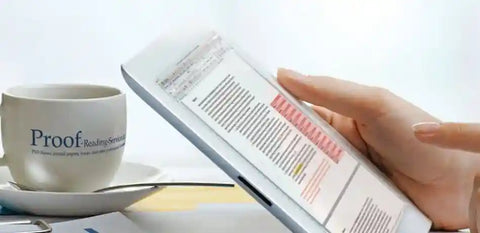The Serial or Oxford Comma: When, Where and Why or When, Where, and Why?
A serial comma is the comma that appears immediately after the penultimate item in a series or list when a conjunction separates that item from the last item. The heading above provides an example, with the comma after ‘Where’ being a serial or series comma. As a general rule, neither using nor not using the serial comma is incorrect in written English, but the presence of this piece of punctuation in a scholarly document often depends upon the guidelines provided by a journal or publisher. It is therefore essential when you are submitting a manuscript for publication to check the relevant author instructions, adopt the preference indicated there and apply it consistently throughout your document.
The serial comma tends to be used particularly in American English and by US publishers, but it is also used by Oxford University Press (hence its alternative name ‘Oxford comma’) and some other UK publishers, so using British or American English does not necessarily help you decide whether you should use the serial comma or not. A personal preference for minimal punctuation would incline an author to eliminate the serial comma, whereas the extensive employment of in-text lists including compound items that use conjunctions might demand the addition of serial commas to ensure clarity of communication. Consistent usage is the key to a professional text and can also enhance the comprehension of readers.
Even if you choose not to use the serial comma in a document you are writing, there may be instances in which you will need to add the comma to avoid ambiguity or confusion, with compound items in a series presenting particular challenges. Some compound items will not present a problem: in ‘She bought milk, juice and tea and coffee,’ for instance, no serial comma is needed for the author’s meaning to be clearly communicated. However, when a compound item joined by a conjunction appears before the main conjunction in a list, using a comma before that main conjunction can be helpful and even necessary: in ‘They brought root beer, vanilla and chocolate ice cream, and cookies,’ for example, the serial comma is necessary before the final ‘and’ to avoid the implication that the cookies, too, were vanilla and chocolate. If, on the other hand, the author intended to suggest that they were, the sentence would be better as ‘They brought root beer and vanilla and chocolate ice cream and cookies.’
In some series, the lack of a serial comma may suggest an appositional relationship where none is intended. ‘I love my grandparents, Lightning McQueen and Sally Carrera’ without a serial comma can imply that the names Lightning McQueen and Sally Carrera are in apposition with ‘grandparents,’ indicating that the cartoon characters Lightning and Sally are the grandparents of the speaker. Adding a serial comma clarifies the meaning of the sentence: ‘I love my grandparents, Lightning McQueen, and Sally Carrera.’ Using a serial comma to clarify a potentially confusing series is not inconsistent with a general pattern of not using the serial comma, and an author’s primary concern should always be clear communication.
Why Our Editing and Proofreading Services?
At Proof-Reading-Service.com we offer the highest quality journal article editing, dissertation proofreading and online proofreading services via our large and extremely dedicated team of academic and scientific professionals. All of our proofreaders are native speakers of English who have earned their own postgraduate degrees, and their areas of specialisation cover such a wide range of disciplines that we are able to help our international clientele with research editing to improve and perfect all kinds of academic manuscripts for successful publication. Many of the carefully trained members of our manuscript editing and proofreading team work predominantly on articles intended for publication in scholarly journals, applying painstaking journal editing standards to ensure that the references and formatting used in each paper are in conformity with the journal’s instructions for authors and to correct any grammar, spelling, punctuation or simple typing errors. In this way, we enable our clients to report their research in the clear and accurate ways required to impress acquisitions proofreaders and achieve publication.
Our scientific proofreading services for the authors of a wide variety of scientific journal papers are especially popular, but we also offer manuscript proofreading services and have the experience and expertise to proofread and edit manuscripts in all scholarly disciplines, as well as beyond them. We have team members who specialise in medical proofreading services, and some of our experts dedicate their time exclusively to dissertation proofreading and manuscript proofreading, offering academics the opportunity to improve their use of formatting and language through the most exacting PhD thesis editing and journal article proofreading practices. Whether you are preparing a conference paper for presentation, polishing a progress report to share with colleagues, or facing the daunting task of editing and perfecting any kind of scholarly document for publication, a qualified member of our professional team can provide invaluable assistance and give you greater confidence in your written work.
If you are in the process of preparing an article for an academic or scientific journal, or planning one for the near future, you may well be interested in a new book, Guide to Journal Publication, which is available on our Tips and Advice on Publishing Research in Journals website.








